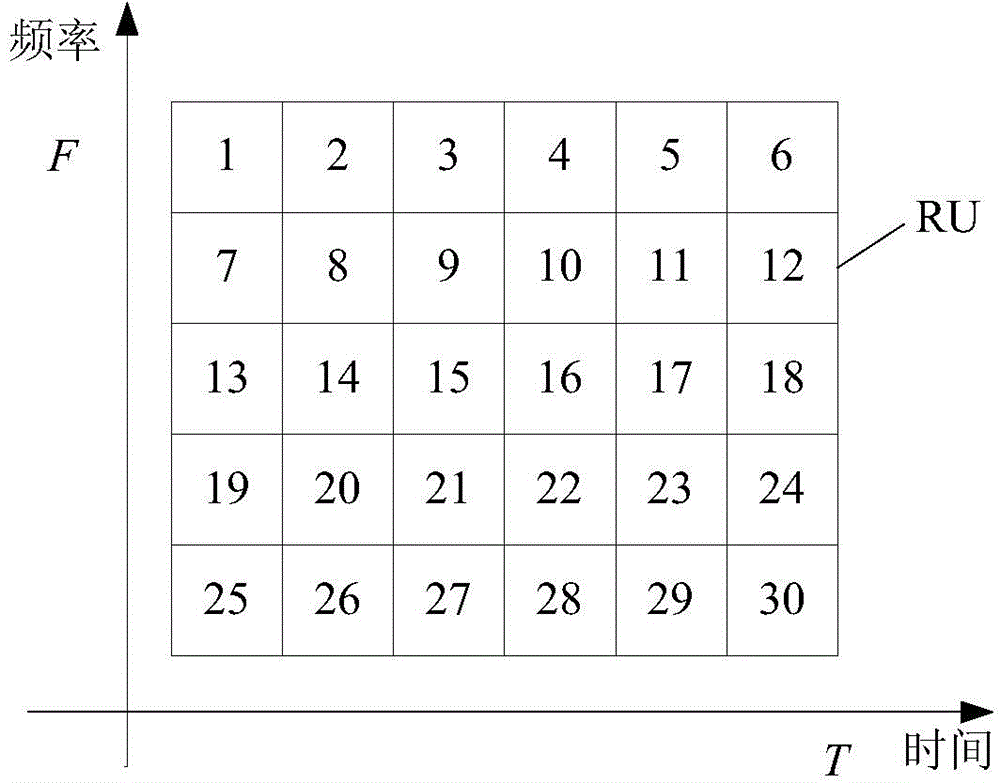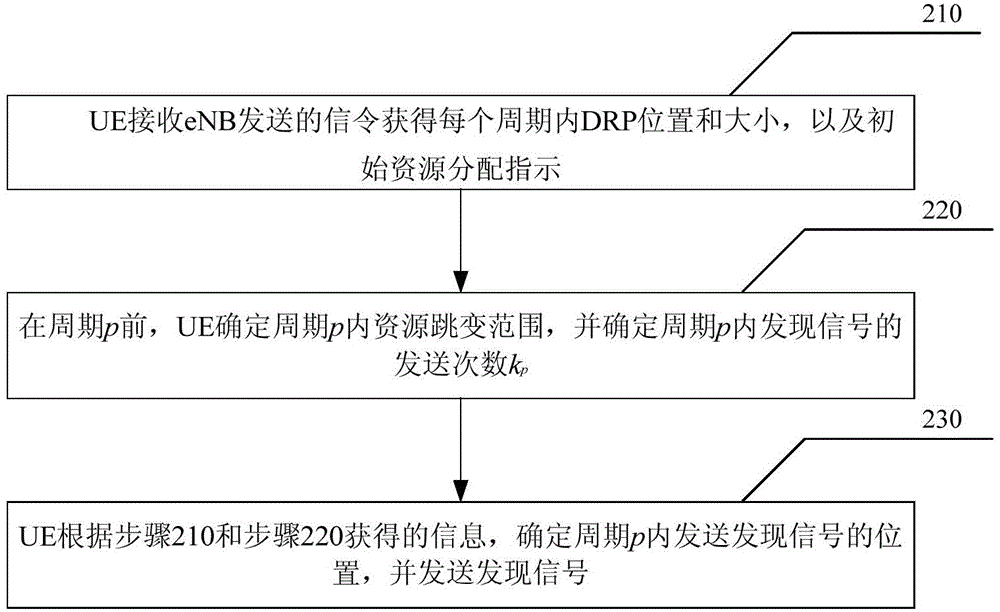D2D (Device to Device) discovery signal transmitting method and D2D(Device to Device) discovery signal transmitting device in LTE network
A technology for discovering signals and sending methods, applied in wireless communication, access restrictions, electrical components, etc., can solve problems such as no mature solution, difficulty in multiplexing wireless resources, waste of wireless resources, etc.
- Summary
- Abstract
- Description
- Claims
- Application Information
AI Technical Summary
Problems solved by technology
Method used
Image
Examples
Embodiment 1
[0097] In this embodiment, the eNB semi-statically configures the location of the DRP, the size T in the time domain, and the size F in the frequency domain through signaling. At the same time, the eNB semi-statically indicates the resource hopping range. The number of times a discovery signal is sent may change in each discovery cycle. The number of discovery signal transmissions by the UE based on the above parameters and the current period k p To determine the sending position of the discovery signal within the period p, the specific steps are as follows:
[0098] Step 310: The UE receives the signaling from the eNB, and obtains the location of the DRP, the size T in the time domain and the size F in the frequency domain, as well as the resource hopping range and initial resource indication.
[0099] The frequency domain size F of the DRP can be indicated directly or indirectly. If it is a direct method, the eNB directly notifies the UE of the start and end positions of ...
Embodiment 2
[0130] In this embodiment, the eNB semi-statically configures the position and the time domain size T and the frequency domain size F of the DRP through signaling. Before each discovery period, the eNB dynamically indicates the resource hopping range. In this embodiment, the time domain size of the resource hopping range is equal to the DRP, and the frequency domain size F' p ≤F. The UE determines the sending position of the discovery signal in the period p according to the above parameters and the resource hopping range of the current period. The specific steps are as follows:
[0131] Step 410: The UE receives the signaling from the eNB, and obtains the location of the DRP, the number k of sending discovery signals, the size T of the time domain and the size F of the frequency domain, and an initial resource indication.
[0132] Similar to Embodiment 1, the frequency domain size F of the DRP may be indicated directly or indirectly. If it is a direct method, the eNB direct...
Embodiment 3
[0155] In this embodiment, the eNB semi-statically configures the location of the DRP and the size T in the time domain and the size F in the frequency domain of the DRP through signaling. The number of times the discovery signal is sent may vary within each discovery cycle. The number of discovery signal transmissions by the UE based on the above parameters and the current period k p To determine the sending position of the discovery signal within the period p, the specific steps are as follows:
[0156] Step 510: UE receives eNB signaling, obtains DRP location, time domain size T and frequency domain size F, and initial resource indication.
[0157] Similar to Embodiment 1, the frequency domain size F of the DRP may be indicated directly or indirectly. If it is a direct method, the eNB directly notifies the UE of the start and end positions of the frequency domain resource occupied by the DRP in the DRP subframe through signaling. If the method is indirect, the eNB indica...
PUM
 Login to View More
Login to View More Abstract
Description
Claims
Application Information
 Login to View More
Login to View More - R&D
- Intellectual Property
- Life Sciences
- Materials
- Tech Scout
- Unparalleled Data Quality
- Higher Quality Content
- 60% Fewer Hallucinations
Browse by: Latest US Patents, China's latest patents, Technical Efficacy Thesaurus, Application Domain, Technology Topic, Popular Technical Reports.
© 2025 PatSnap. All rights reserved.Legal|Privacy policy|Modern Slavery Act Transparency Statement|Sitemap|About US| Contact US: help@patsnap.com



